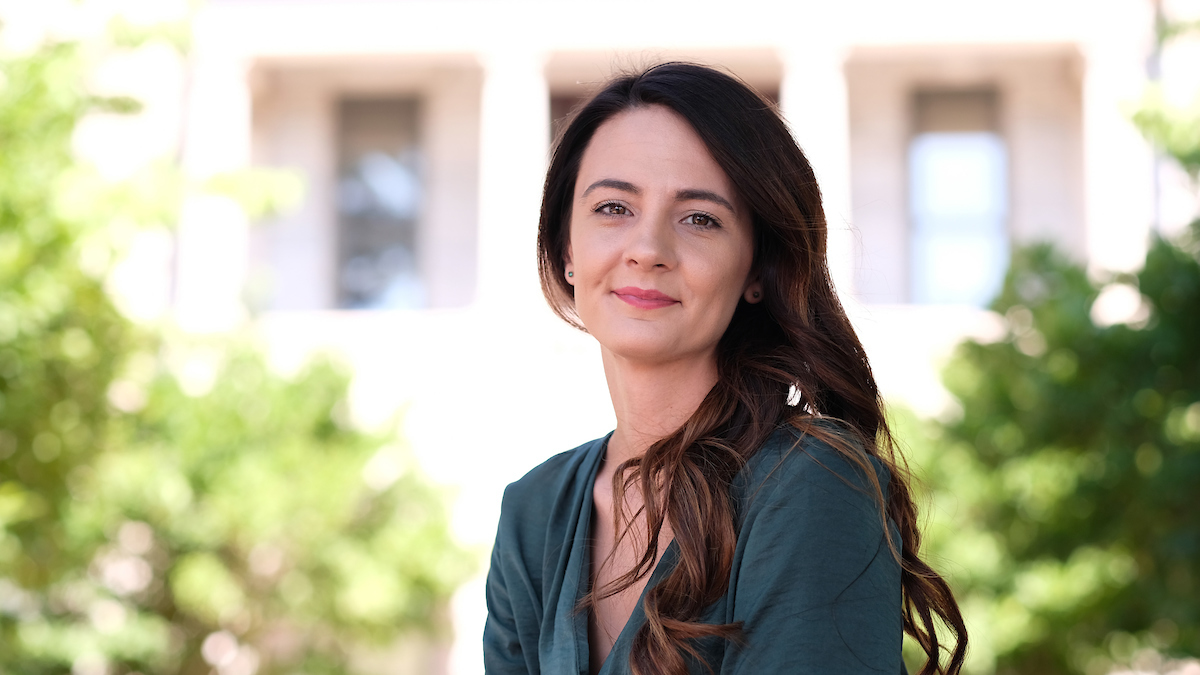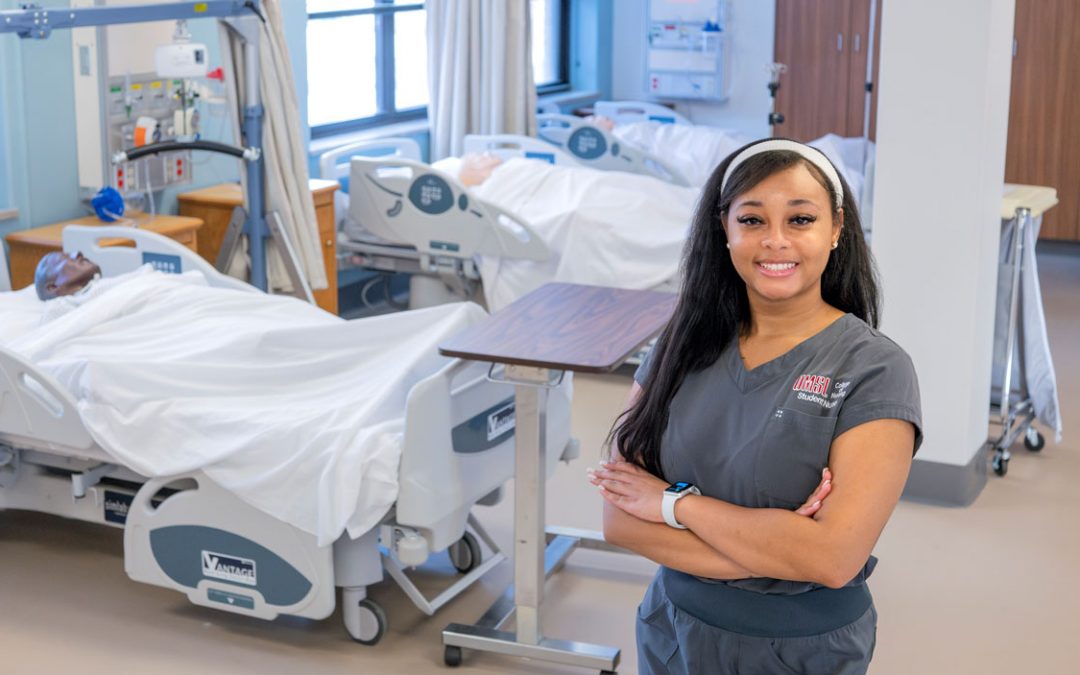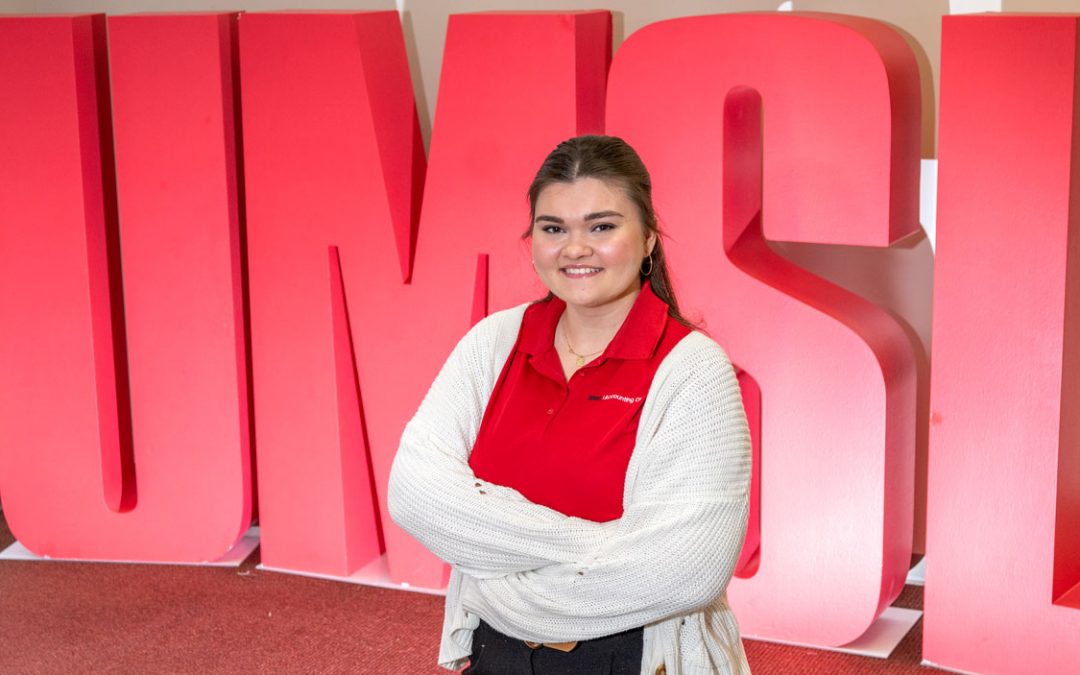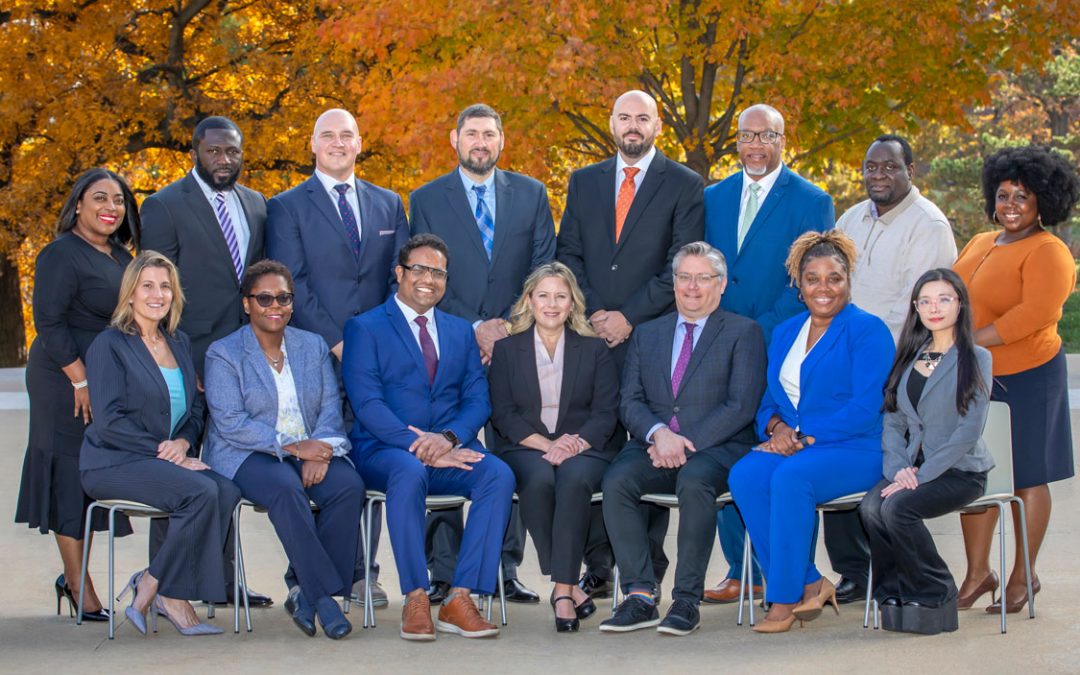
Shelby Davis works as a data outreach associate with Measures for Justice, a nonprofit organization aiming to gather county-level criminal justice data throughout the United States. Davis received both bachelor’s and master’s degrees in criminology and criminal justice from the University of Missouri–St. Louis. (Photo by August Jennewein)
Shelby Davis has visited jails, courthouses and public defenders’ offices across the state of Missouri – not to mention a few places in California – during the past year in a never-ending hunt for data on how justice unfolds in each locale.
Davis, who holds bachelor’s and master’s degrees in criminology and criminal justice from the University of Missouri–St. Louis – the latter earned in 2017 – serves as a data outreach associate with Measures for Justice, a nonprofit organization aiming to gather county-level criminal justice data throughout the United States.
Last year, Measures for Justice launched an online portal allowing practitioners, researchers and the wider public to access what the organization has collected in hopes of better informing discussions about criminal justice and decision-making on reform.
It started with county-by-county data from six states – Florida, North Carolina, Pennsylvania, Utah, Washington and Wisconsin – on such measures as jail population and jail capacity, typical bail amounts and court fees, how often those fees are paid, the percentage of court cases that get dismissed and the percentage of nonviolent felonies sentenced to prison.
The portal will soon add data from Arizona and Missouri – the latter of which Davis played a significant role in collecting – and has a goal of having data from 20 states accessible by 2020.
“One of the things I love most about my job is that I get to go to these places and have these conversations with people that know their county and their criminal justice system the best,” Davis said. “It gives me a super intimate look at what it looks like – both the challenges and successes – on the ground without actually being in that world.”
It’s helped her understand a reality too often ignored in dialogue about reform.
“People love to talk about the American criminal justice system, but it’s not a system. It’s 3,000-plus systems,” said Caroline Sarnoff, who has overseen Davis’ work as the director of data outreach with Measures for Justice. “Every county has autonomy about what justice looks like – their own elected sheriffs, their own prosecutors, their own judges. So justice can look completely different 10 miles down the road, and you would never understand that unless you were forced to have conversations with local practitioners over and over and over again. It gives you a lot of respect for how hard change is.”
Davis has met with presiding judges and public defenders in California and prosecuting attorneys and sheriffs in Missouri.
No matter how different their roles or the jurisdictions in which they work, her goal is the same: to inform them about the project and convince them to add their data to the broader picture of criminal justice in America.
The information doesn’t always come electronically in well-organized databases. She once was at a county jail and was handed a steno pad.
“It was like, ‘Here’s our booking log,’” Davis said.
But she was just as grateful to receive it.
“We really want stakeholders to feel and to know that their insight is valuable,” Davis said. “For us, we wouldn’t have a data portal if people don’t think it’s useful or don’t use it, so stakeholder feedback is critical to our success and in making sure not only that we’re getting the data but we’re getting it right and we’re interpreting things right.”
Often, it takes some convincing to get people to participate in the project.
Davis has a rare combination of qualities that have served her well in getting people on board.
“It’s this interesting set of skills where she has to be able to really connect with someone – a stranger – and form a relationship and form some trust,” Sarnoff said. “But then also be able to have pretty high-level conversations about research methodology and criminal justice hot topics.”
Her training at UMSL, beginning as an undergraduate, had her well-prepared for the job.
Davis, who grew up in St. Charles, admits UMSL was not her first choice. She was contemplating going to Arizona State after graduating high school but the cost of out-of-state tuition convinced her to remain closer to home.
“I learned pretty quickly that that was a good choice,” Davis said. “UMSL’s criminology program is highly respected. It’s one of the best in the country, and it was just a perfect fit for me.”
Her experience as an undergraduate, and encouragement from professors such as Steph DiPietro and Michael Campbell, convinced her to stick around and pursue a graduate degree.
Davis remembers many of her fellow students starting the master’s program with a clear direction in mind – right down to the date one might have wanted to gain acceptance into the FBI Academy.
She was never so certain.
“It was a great place to be and not know exactly where I wanted to be,” Davis said, “because I had so many opportunities there to be exposed to so many different types of research and different things so I could decide what I did like and what I didn’t.”
“Shelby was a very bright and curious student,” said Professor Beth Huebner, who noted her work on an Office of Justice Programs project, led by Founders Professor Richard Rosenfeld, examining gun violence in the city of St. Louis. “She volunteered for every opportunity in the department and was eager to learn about all aspects of criminology and the research process as a whole.”
Davis learned about Measures for Justice from a flier that was circulating during her final semester at UMSL and had her interest piqued, connecting immediately with the need for data and transparency.
She consulted Associate Professor Elaine Eggleston Doherty, the director of the graduate program, before applying for a job with the project and received a strong recommendation from Huebner to help her land it.
It’s proved an ideal fit, and Davis is eager to see it continue to grow.
“Hopefully, we’ll just continue to develop better, more efficient ways to keep it up to date,” Davis said, “so we have this resource that anyone can log onto and say, ‘OK, how is my county’s criminal justice system performing?’”














